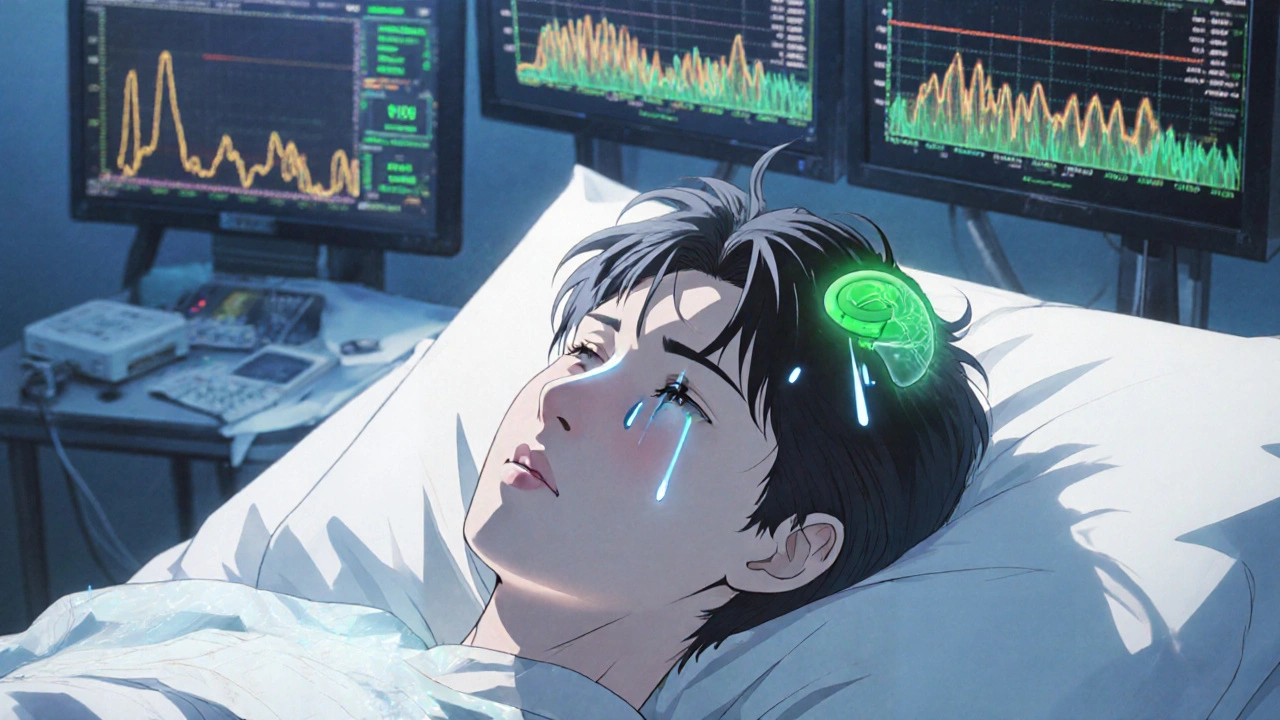
When you hear the words brain tumor, it’s easy to imagine the worst. But not all brain tumors are the same. Some grow slowly over years. Others spread quickly, demanding urgent action. What matters most isn’t just the location - it’s the type, the grade, and how doctors combine treatments to target it. The way we classify and treat brain tumors has changed dramatically since 2021, thanks to a major update from the World Health Organization called WHO CNS5. This isn’t just jargon - it’s the new standard that shapes survival, treatment options, and even hope for patients today.
Understanding Brain Tumor Types and How They’re Classified
Brain tumors aren’t one disease. They’re dozens, each starting from different brain cells and behaving in their own way. The most common types come from glial cells - the support cells of the brain. These include astrocytomas, oligodendrogliomas, and ependymomas. Others, like meningiomas, start from the membranes covering the brain. Each has its own rules.
Before 2021, doctors looked only at what tumors looked like under a microscope. Now, they also test for specific genetic markers. The WHO CNS5 classification changed everything. For example, an astrocytoma can now be grade 2, 3, or 4 - but only if it has an IDH mutation. If it doesn’t, and it’s aggressive, it’s called glioblastoma, IDH-wildtype, and it’s automatically grade 4. That’s a huge shift. Two tumors that look the same under the microscope can now have completely different names, prognoses, and treatments based on their DNA.
Oligodendrogliomas are another example. These tumors must have two specific genetic changes - IDH mutation and 1p/19q codeletion - to be called oligodendroglioma at all. Without those, it’s something else. Meningiomas, meanwhile, are graded 1 to 3, but they’re not classified the same way as gliomas. They don’t use IDH status. They rely on cell features like how many are dividing and whether they’ve invaded brain tissue.
What Brain Tumor Grades Really Mean
Grades don’t just describe how bad a tumor looks - they predict how it will behave. Grade 1 tumors are the least aggressive. Pilocytic astrocytomas, often found in children, fall here. They grow slowly, have clear edges, and can sometimes be cured with surgery alone. Grade 2 tumors - like diffuse astrocytoma or oligodendroglioma - look almost normal under the microscope, but they creep into healthy brain tissue. They may not spread outside the brain, but they often come back, sometimes as a higher grade.
Grade 3 tumors are anaplastic. That means the cells are actively dividing, looking more abnormal, and invading deeper. Anaplastic astrocytoma and anaplastic oligodendroglioma are in this group. They grow faster and almost always need radiation and chemotherapy after surgery.
Grade 4 is the most aggressive. Glioblastoma, IDH-wildtype, is the most common brain cancer in adults. It grows rapidly, forms its own blood supply, and often has a dead center (necrosis). Even with the best treatment, median survival is just 14.6 months. But here’s the key: not all grade 4 tumors are the same. If a grade 4 astrocytoma has an IDH mutation, survival jumps to over 31 months. That’s why molecular testing isn’t optional anymore - it’s life-changing.

How Multimodal Treatment Works Today
Treatment for brain tumors isn’t one-size-fits-all. It’s a combination - multimodal - chosen based on tumor type, grade, location, and patient health. Surgery is usually the first step, if possible. But with tumors that spread into brain tissue, like low-grade gliomas, surgeons can’t remove everything without risking speech, movement, or memory.
That’s where radiation and chemotherapy come in. For grade 2 and 3 gliomas, radiation is often delayed until the tumor grows or causes symptoms. Chemotherapy drugs like temozolomide are used for both high-grade tumors and some low-grade ones. But now, there’s a new player: targeted drugs.
In June 2023, the FDA approved vorasidenib for IDH-mutant grade 2 gliomas. In the INDIGO trial, patients on vorasidenib went 27.7 months without their tumor growing - more than double the 11.1 months seen with placebo. That’s not a cure, but it’s a game-changer. It means patients can avoid radiation and chemotherapy for years, preserving their quality of life.
For glioblastoma, the standard is still the Stupp protocol: surgery, daily radiation with temozolomide, then maintenance chemo. But even here, molecular testing matters. If the tumor has MGMT promoter methylation, temozolomide works much better. Some patients now get tumor-treating fields (TTFields), a wearable device that uses electric fields to disrupt cancer cell division. It’s not magic, but it adds months to survival.
Why Molecular Testing Changes Everything
Testing isn’t just about diagnosis - it’s about prediction. A biopsy used to give one answer: "this is a grade 3 tumor." Now, it gives five: tumor type, IDH status, 1p/19q codeletion, MGMT methylation, and TERT mutation. Each tells a different part of the story.
For example, a 35-year-old with a grade 2 tumor might be told, "This is an IDH-mutant, 1p/19q-codeleted oligodendroglioma." That means they have a 70% chance of living more than 15 years. Without that test, they’d just be told "low-grade glioma," and the prognosis would be vague. That’s the difference between fear and planning.
Testing also affects treatment timing. A patient with an IDH-mutant grade 2 tumor might wait years before needing radiation. But if it’s IDH-wildtype, doctors act faster. The cost of testing? Around $3,200 to $5,800 in the U.S. But the value? It can save years of unnecessary treatment or point to a drug that extends life by more than a year.

What Patients Are Really Experiencing
Behind every statistic is a person. One Reddit user, diagnosed with a grade 2 oligodendroglioma at 32, had just 72 hours to decide whether to freeze eggs before surgery. Another, called GBMWarrior87, joined a clinical trial for vorasidenib and gained 18 months without progression - longer than the average survival with standard care.
But not everyone gets timely care. A 2022 survey of 1,247 UK patients found that 68% waited more than 8 weeks for a diagnosis. People with low-grade tumors waited an average of 14.2 weeks. That delay isn’t just frustrating - it can mean the tumor grows, making treatment harder.
And misinformation is common. One study found 42% of patients thought "grade 2" meant a 20% survival rate. It doesn’t. Grade 2 often means decades of life, especially with the right molecular profile. Education matters as much as treatment.
What’s Next in Brain Tumor Care
The future is moving fast. The CODEL trial, testing combined chemo for oligodendroglioma, will report results by the end of 2024. Liquid biopsies - testing tumor DNA in spinal fluid - are showing 89% accuracy in detecting tumors without surgery. That could mean fewer invasive procedures and earlier detection.
Doctors are also learning how to better use existing tools. Pathologists need to see about 17 cases before they can reliably apply WHO CNS5 guidelines. That’s a steep learning curve. But it’s happening. Hospitals like Johns Hopkins and the National Cancer Institute are leading the way, sharing molecular data through the Brain Tumor Repository Network, which now holds samples from over 8,700 patients.
The market for brain tumor diagnostics is growing fast, projected to hit $2.8 billion by 2027. That’s because molecular testing isn’t a luxury anymore - it’s the baseline. The FDA’s approval of the IDH1 antibody test in 2021 cut testing time from weeks to two days. That’s life-saving speed.
For patients, the message is clear: ask for molecular testing. Know your tumor’s IDH status. Ask if you’re eligible for clinical trials. And understand that a grade 2 tumor today isn’t the same as it was five years ago. It’s not a death sentence - it’s a condition with options.
What’s the difference between a grade 2 and grade 4 brain tumor?
Grade 2 tumors grow slowly, have cells that look only slightly abnormal, and often stay within one area of the brain. They may recur, but often not for years. Grade 4 tumors, like glioblastoma, grow rapidly, invade healthy brain tissue, form new blood vessels, and have areas of dead tissue. They are aggressive, hard to remove completely, and require intensive treatment. Survival for grade 4 is measured in months without molecular-targeted therapy, while grade 2 can allow for decades of life - especially with IDH mutations.
Does a higher grade always mean a worse prognosis?
Not always. While grade 4 tumors are generally more aggressive, molecular markers can change the story. A grade 4 astrocytoma with an IDH mutation has a median survival of 31 months - more than double the 14.6 months seen in IDH-wildtype glioblastoma. Similarly, a grade 3 oligodendroglioma with 1p/19q codeletion often responds better to chemo than a grade 2 tumor without those markers. So it’s not just the grade - it’s the biology behind it.
Can a low-grade brain tumor become high-grade?
Yes. Low-grade tumors (grades 1 and 2) can transform into higher-grade ones over time. This is called malignant transformation. About 50% of grade 2 astrocytomas eventually become grade 3 or 4. That’s why doctors monitor them closely with MRI scans every 3 to 6 months. Molecular testing helps predict which tumors are more likely to transform - those without IDH mutations or with certain gene changes are at higher risk.
Why is molecular testing so important for brain tumors?
Molecular testing tells doctors what the tumor is made of at the genetic level. Two tumors that look identical under a microscope can behave very differently. For example, an IDH-mutant glioma responds better to treatment and lives longer than one without the mutation. Testing for 1p/19q codeletion identifies oligodendrogliomas that respond well to chemotherapy. MGMT methylation predicts whether temozolomide will work. Without this info, treatment is guesswork. With it, therapy becomes precise.
Are there new treatments for brain tumors in 2025?
Yes. The biggest breakthrough is vorasidenib, approved in 2023 for IDH-mutant grade 2 gliomas. It delays tumor growth for over two years - far longer than previous options. Other new approaches include tumor-treating fields (TTFields) for glioblastoma, which are now standard in many centers. Liquid biopsies, which detect tumor DNA in spinal fluid, are being tested for early detection and monitoring. Clinical trials are also exploring immunotherapy and gene-targeted drugs for specific mutations, with results expected in 2024 and 2025.
Write a comment
Your email address will not be published.






2 Comments
So let me get this straight - we’re now diagnosing brain tumors like we’re cracking a Netflix password? 🤯 IDH this, 1p/19q that… if my phone needs a biometric scan just to unlock, I’m glad my brain’s getting the VIP treatment. Also, vorasidenib? Sounds like a villain in a Marvel movie. But hey, if it buys me 27 months of not dying, I’ll call it Tony Stark’s cousin. 🚀💊
I’ve had a cousin go through this. They waited 11 weeks for an MRI just to find out it was a grade 2 - and even then, they didn’t get the molecular test until three months later. Meanwhile, she was teaching high school, baking cookies, and pretending everything was fine. The system’s broken, but the science? Honestly? It’s the most hope we’ve had in decades. Not perfect. But better.